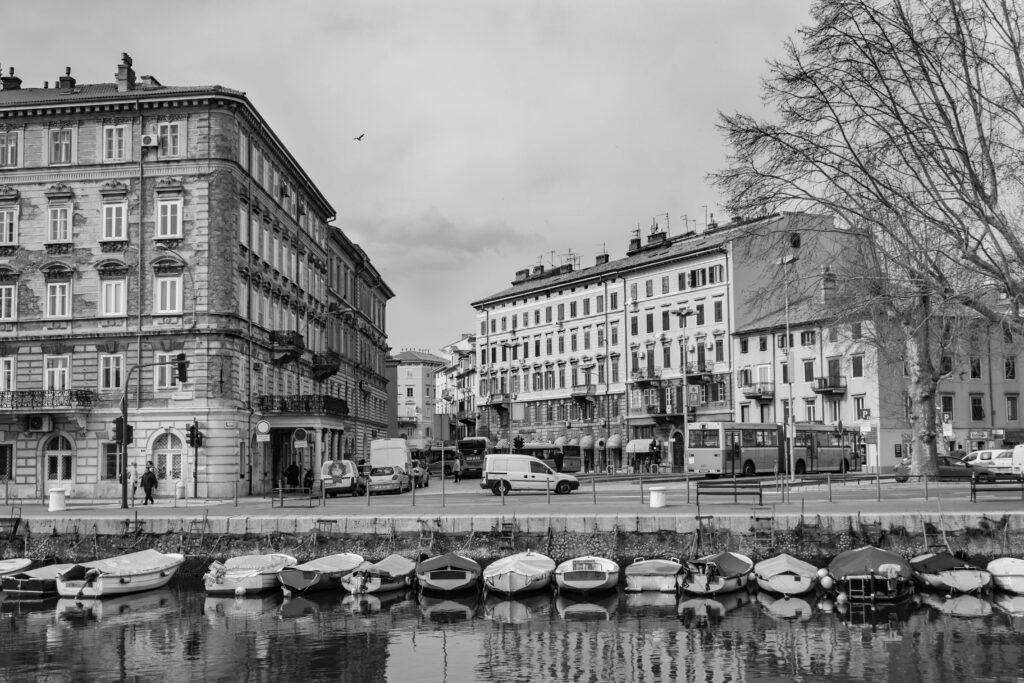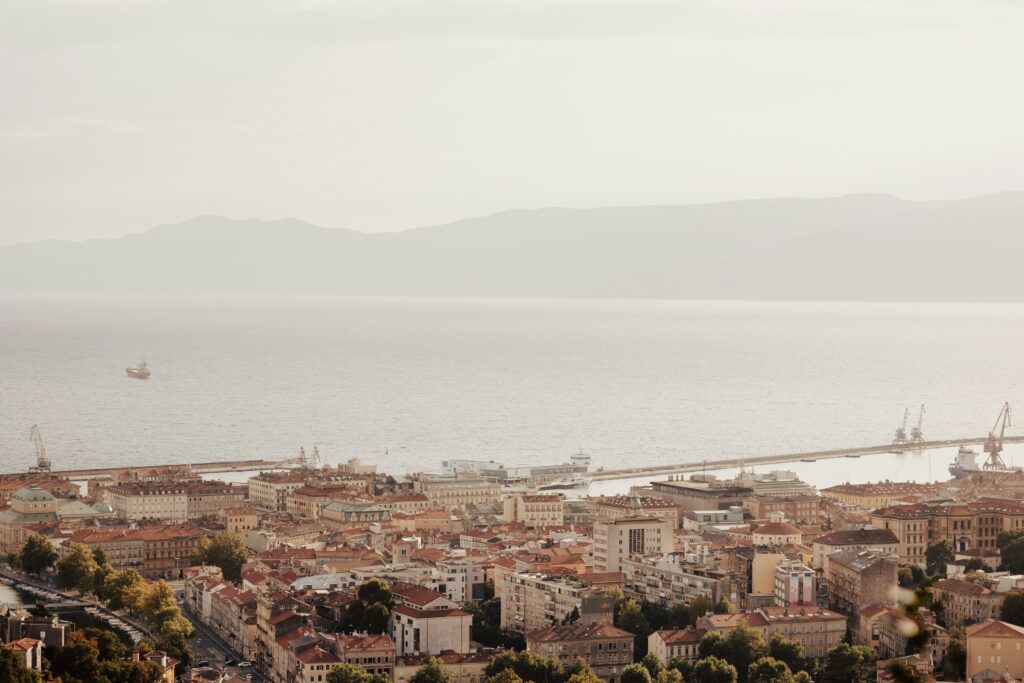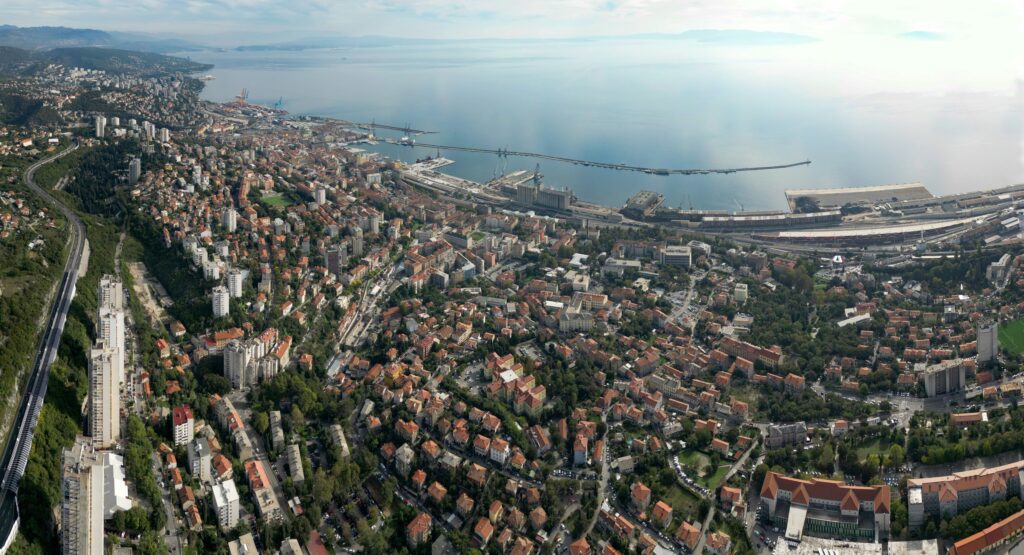November the 25th, 2025 – There’s a Croatian city that was once its very own independent state just 100 years ago, with its own currency and full international recognition.
As Putni kofer writes, Rijeka has always been widely recognised as a city with a prominent rock scene, a free spirit and a general sense of openness to the world. Its quirky streets often transform into a living stage for rebellious ideas, artistic experiments and cultural exchanges that have left a deep mark on more modern Croatian history. As a thriving port city, often at the mercy of (sometimes unwelcome) historical events, Rijeka has learned to live with an almost constant rhythm of change over the centuries, which is why this sense of freedom and diversity is so strongly woven into its very specific identity.
the free state of rijeka – a balance between two worlds

However, few people know that this Croatian city was its very own completely independent state just 100 years ago. After the turbulent events of World War I and the collapse of the Austro-Hungarian Empire, more specifically in 1920, the Free State of Rijeka (Italian: Stato Libero di Fiume) was officially proclaimed. It was an unusual political construct, but was duly recognised by international treaties, located on just a few dozen square kilometres between Italy and the Kingdom of SHS. It had its very own political institutions and even state symbols. Its short sovereignty was a symbol of the effort to remain an autonomous bridge between two very different worlds.
This Croatian city being its own independent state lasted only a few years, but it left a strong mark in history. Diplomatic tensions, very peculiar local politics, pressure from surrounding great powers and internal divisions ultimately doomed the experiment in 1924. Rijeka was then annexed to the Kingdom of Italy, which formally ended the Free State of Rijeka for good. Although it existed briefly, perhaps too briefly, this episode remains one of the most unusual and fascinating chapters in Croatian and European history. It was a moment when a city had its own statehood, at a time when Europe was busy reorganising itself after the greatest war it had ever known.
rijeka – the home of one of the world’s most revolutionary weapons

At a time when the industrial revolution and naval strategy were beginning to entirely reshape the face of Europe, it was precisely Rijeka that became the cradle of a revolutionary weapon, today known as the torpedo. In a Rijeka-based factory named Stabilimento Tecnico Fiumano, under the leadership of British engineer Robert Whitehead and based on the idea of Croatian officer Ivan Blaž Lupis, the first modern self-propelled torpedo was developed back in 1866.
Amidst the bustling streets of Rijeka, among modern buildings and traces of a rich past, rises an unusual witness to time, the leaning bell tower of the Church of the Assumption of the Blessed Virgin Mary. Its nickname, the “leaning tower”, comes from its tilt of about 40 centimetres, which was first measured back in 1920.
Unlike the famous Tower of Pisa in neighbouring Italy, which has become a symbol of the entire city due to its prominent tilt, Rijeka’s Leaning Tower hides as a precious detail, a discovery for those who want to get to know the hidden layers of Rijeka. The reason for the tilt lies in the groundwater, primarily in the Lešnjak stream, which has been undermining the building’s foundations for decades. Experts have confirmed that the tower is stable and safe, and its “imperfections” only make it even more special.
2020 – rijeka, the european capital of culture

In pandemic-dominated 2020, Rijeka took home the prestigious title of European Capital of Culture, which fully reflected its identity as an open, vibrant and creative city by the Adriatic Sea. Under the slogan Port of Diversity, this Croatia city that was once an independent state designed an ambitious cultural programme with an emphasis on what makes Rijeka special. That included the sea, a strong industrial past and a rich history of migration. Hundreds of cultural events, exhibitions, concerts and theatre performances were to be held throughout the year, and numerous domestic and international partners were involved in the project.
Although the global coronavirus pandemic placed a heavy burden on the entire project, Rijeka still managed to leave its mark with its energy and creativity. It was remembered by all in 2020 as a city that, in one of the most challenging years living memory has known, showed how strong culture can be, how inspiring togetherness can be and how art can connect people even when the world was “closed for business”.
the first car in croatia was driving in rijeka, and the first cinema called the city home

The city on the Rječina River was once the busiest port in this part of Europe, and it was here that the first car in Croatia drove back at the beginning of the 20th century. The first cinema in Croatia was also opened in Rijeka, while some of the most famous European inventors, engineers and artists of their time lived in Rijeka’s neighbourhoods. Rijeka also had its very own currency, and during the 19th century it was one of the most important gateways to Central Europe for travellers arriving by ship from all over the world.
Subscribe to our newsletter
the fields marked with * are required
